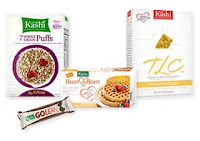We are still studying fats in my Nutrients class, and yesterday the assignment was to create a client handout on something related to fat. When we make client handouts, the purpose is to give clear, solid information on a topic that is relevant to a client’s health. I chose hydrogenation. There is so much information out there about hydrogenated oils, partially-hydrogenated oils, foods containing these oils… many people don’t know what to make of it all.
How Does It Work?
Hydrogenation is the most common method used for altering natural oils. It is also extremely harmful to our health. During hydrogenation, unsaturated and essential fatty acids are altered using high temperatures, high pressure, hydrogen gas, and a metal catalyst. The metal catalyst is usually nickel. However, it can be called nickel as long as it is 50.1% nickel, and this is usually the case – the other half is aluminum. The aluminum remains in the final product, and is therefore eaten by the consumer. Aluminum is linked to Alzheimer’s disease, osteoporosis and even cancer.
So What is Partial Hydrogenation?
Partial hydrogenation is simply hydrogenation that is not fully completed. This keeps the oil at a consistency that is still useable in many products. However, partial hydrogenation also changes anywhere from 10% to 55% of the oils original fats into harmful trans fatty acids and other unnatural fatty acids. Full hydrogenation produces only saturated fatty acids, but is difficult to use in products because of its harder, waxy consistency.
The chemical changes made during partial hydrogenation alter fat molecules to the point where they are interfering with normal biochemical processes inside our bodies. Trans fats increase LDL cholesterol, decrease HDL cholesterol, interfere with liver detoxification, and inhibit proper function of essential fatty acids (which leads to obesity and other disease). All essential fatty acids (omega-3s and omega-6s), which are vital for health, are destroyed during hydrogenation.
Partially hydrogenated oils are found in products such as margarine, shortenings, shortening oils, certain vegetable oils, some salad dressings, fried foods, candies, and bakery products.

Why Is Hydrogenation Used?
Hydrogenated oils will not spoil, so shelf life is increased. The process of altering the oils makes them usable in a wider variety of products. Also, the hydrogenation process is inexpensive and products made with hydrogenated oils have extremely high profit margins.
A classmate mentioned last night that margarine, which is made from hydrogenated oils, is one molecule away from being plastic. And, rumor has it that if you leave a stick of margarine and a stick of butter outside, over time the butter will get completely eaten by bugs and squirrels and birds, but the margarine will be left untouched. What animals and insects want to eat plastic?? I can assure you I will be performing this experiment as soon as it gets warmer outside, so stay tuned!

What Does It Mean For Health?
During the hydrogenation process, the following items are removed from oils:
- All protein
- All fiber
- 95-99% of all minerals
- 65-100% of all vitamins
- Almost all lecithin and phytosterols (both very beneficial nutrients)
- All or some essential fatty acids
In addition, toxic substances are added into the oils so they are in optimal form for being inserted into food products. Trans-fatty acids and hydrogenated oils are foreign to our bodies. Because of this, they completely throw off balance and lead to the following health issues:
- Obesity
- Cancer
- Damage to cell membranes
- Harmful to the heart’s proper functioning
- Impair energy flow and production
- Interfere with pregnancy
- Can cause low birth weight and other birth issues
- Decreases insulin response (precursor to diabetes)
- Other major diseases and health issues
What You Can Do
The best thing you can do is to completely avoid anything containing hydrogenated oils (partial or otherwise). Labeling can be unclear – depending on the degree of hydrogenation, the food company may or may not be legally required to label it “partially” hydrogenated. So, whether the label says “hydrogenated,” “partially hydrogenated,” or even “shortening,” just avoid it altogether. And when you see things advertised as “zero trans fats,” be careful. If the product has less than 0.5 grams of trans fats, they can claim to have 0 trans fats. So they may still contain trans fats, and if it is something you eat on a regular basis, that adds up.
Buy butter, not margarine or any other buttery spreads, as we talked about here. Of all the options out there, real butter is the only 100% whole food. And you know how I feel about eating only whole foods!
And, perhaps most importantly, educate yourself on fats. Essential fats are so vital to our health and without them, our bodies will eventually fail us. Too many of us are terrified of fats, leading us to consume only products labeled “low-fat” or “fat-free”. But if you do your homework, you will realize how harmful these products really are. So, go enjoy your butter (buy raw – it’s much better!) and remember that fats do not make us fat, as long as you’re eating the right kinds!



































